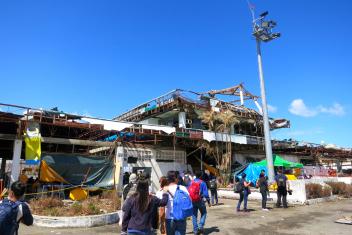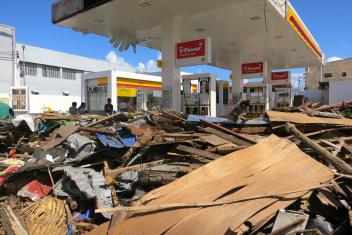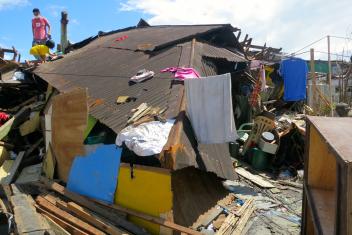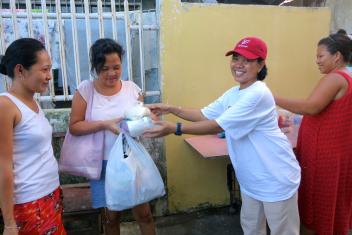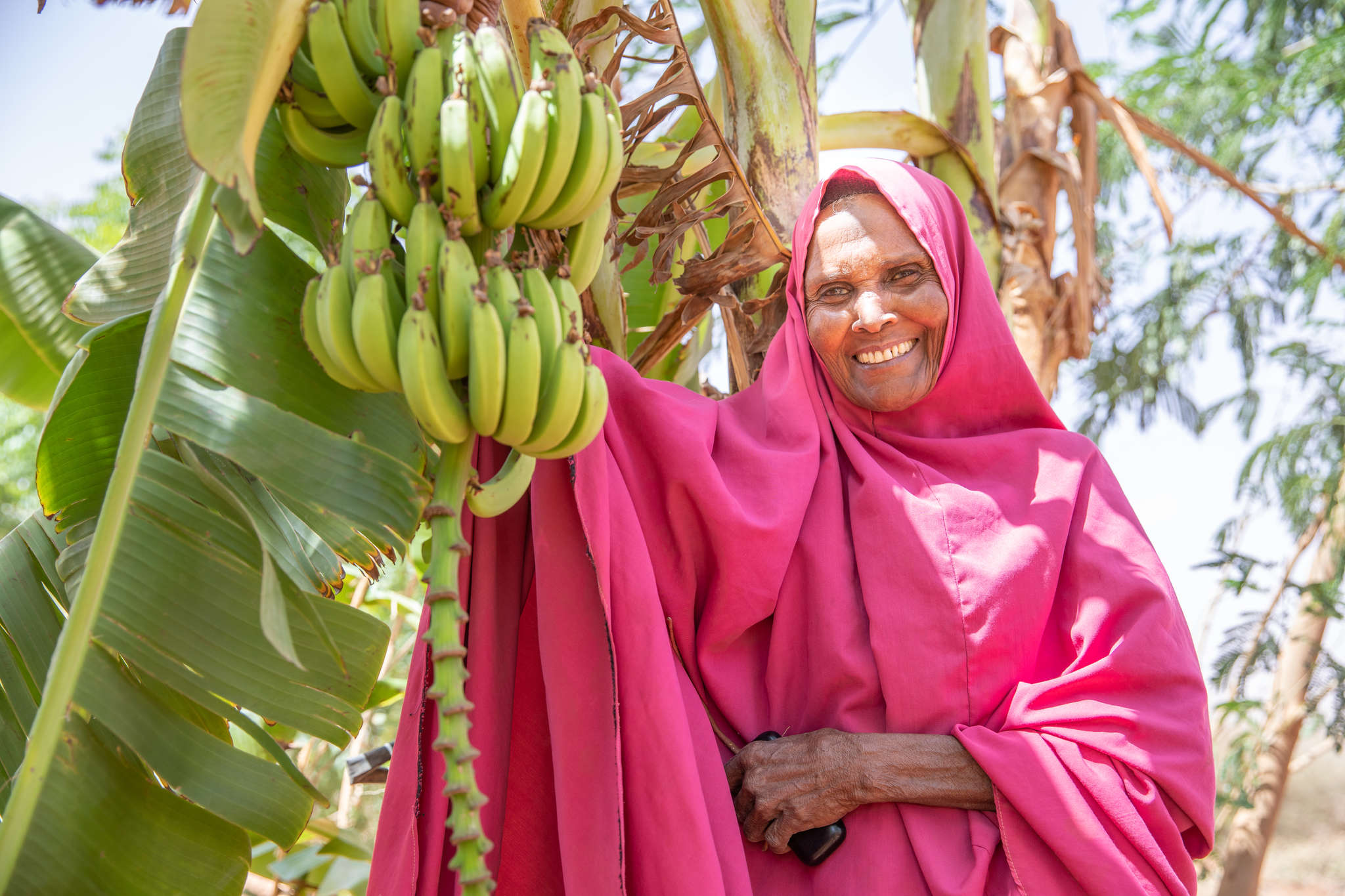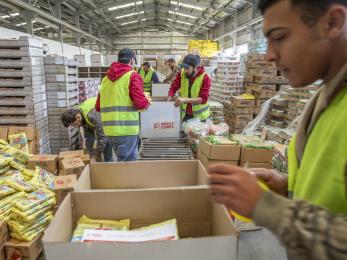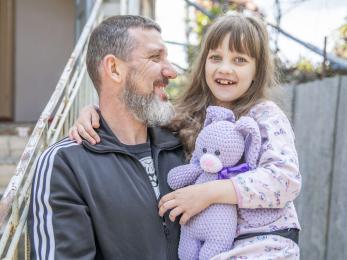Reflections on helping typhoon survivors in Tacloban
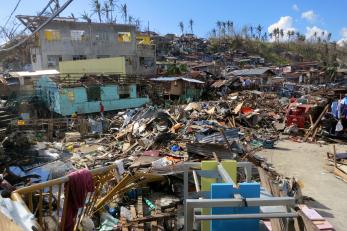
Dewi Hanifah is a member of our Indonesia Response Team, members of which are trained to respond to the many natural disasters that strike this region of southeast Asia. She was one of the first Mercy Corps responders on the ground in the Philippines and has been the head of our emergency distributions in the weeks since Typhoon Haiyan.
On a recent break from field visits, she wrote about her experience in the early days after the storm.
I arrived in the Philippines a few weeks ago. It had only been a few days since Typhoon Haiyan (known locally as “Yolanda”) blasted through the eastern Visayas region of the Philippines, and I was headed to Tacloban — one of the hardest hit areas.
As our plane from Cebu approached Tacloban Airport a few hours after sunrise, the memories of previous natural disasters ran through my head: “It’s just like the Indian Ocean tsunami in 2004 and the Haiti earthquake in 2010.”
As an Emergency Program Manager for Mercy Corps, I am tasked to respond to humanitarian crises. Before Haiyan I had been deployed to the Mentawai Islands of Indonesia, where hundreds had died and thousands had been displaced in 2010 by a deadly combination of tsunami, multiple earthquakes and volcanic eruptions.
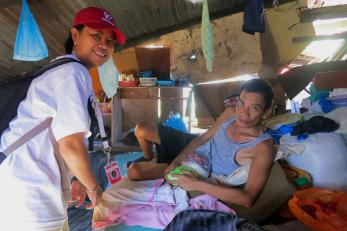
“You’re not new to this kind of catastrophe,” I told myself repeatedly, just as the wheels of the plane bumped against the runway and screeched to a full stop.
The skeletal remains of Tacloban Airport signaled to me and my colleague, Alan Habinada, a native of Tacloban, that there would be worse things to come.
Alan was coming home for the first time since the typhoon-ravaged his hometown. I was accompanying him to bring much-needed relief assistance to his mother, extended family and many more families in his neighborhood, as well as to conduct an assessment of the needs in the area.
The 15-minute car ride from the airport to Alan’s neighborhood felt like driving through miles of wasteland.
Overturned cars hung precariously on rubbish piles pushed to the side of the road. Ruins of decimated buildings and houses stood stripped of roofs, walls, and any semblance that they had been inhabited by people just several days ago.
When we reached Alan’s village we were welcomed with smiles and a collective sigh of relief. It was the first time Alan had seen his family and friends since the typhoon struck.
Everyone was grateful for the relief packs I distributed. Alan’s mother had stocked up on water, rice, and canned goods upon hearing the weather warning, but the family’s supply — especially of drinking water — was nearly finished by the time we arrived.
For Alan, the joy of embracing his mother and relatives, who survived the deadly force of Typhoon Haiyan, was short-lived. He had to move on to the next purpose of his visit: to search for his missing fiancée and her family. They had not been heard from since the typhoon hit, and everyone feared the worst.
Like Alan, I also had to focus on my second objective: to assess how Mercy Corps can help the survivors of Typhoon Haiyan, in the initial emergency response phase, as well as through early recovery, reconstruction and beyond.
It was at this point that Alan and I began our arduous trek across the havoc-stricken city of Tacloban. As we traveled through the city, the putrid scent of decay became palpable.
Body bags were strewn around on clearings and pathways. Houses, trees and lampposts, which once stood tall along the shores, were reduced to rows and rows of rubbish and rubble as far as I could see. The carcasses of cows and pigs floated like paper boats on a murky river, made stagnant by a huge pile of debris blocking its flow out into the ocean.
From talking with many people in makeshift shelters we met along the way, and families and local officials in evacuation centers, I sensed a common thread: Filipinos possess a tenacity that transcends trauma, and they are yearning to just get on with their lives.
They need immediate assistance: food, water, sanitation services and a roof over their heads. But they also want their children to be able to play and be kids again in safer surroundings. They want to be able to make a living again, so they can take care of themselves.
On my flight back to Cebu after an emotionally and physically exhausting trip, I reflected on what I experienced in Tacloban. The destruction is indeed akin to what we’ve seen in other parts of the world in recent years. But what’s even more similar is the dogged determination of the Filipino people to rebuild their lives from scratch, as soon as they can.
The Filipinos I met are drawing strength from their faith in God that tells them they were spared so that they can live meaningful lives. Even Alan — who eventually learned that his fiancée was killed in the storm — keeps his hopes high that his hometown will rise again.
Their outlook in life is inspiring and humbling, and I’m proud that Mercy Corps is here to help Filipinos rebuild their lives.
